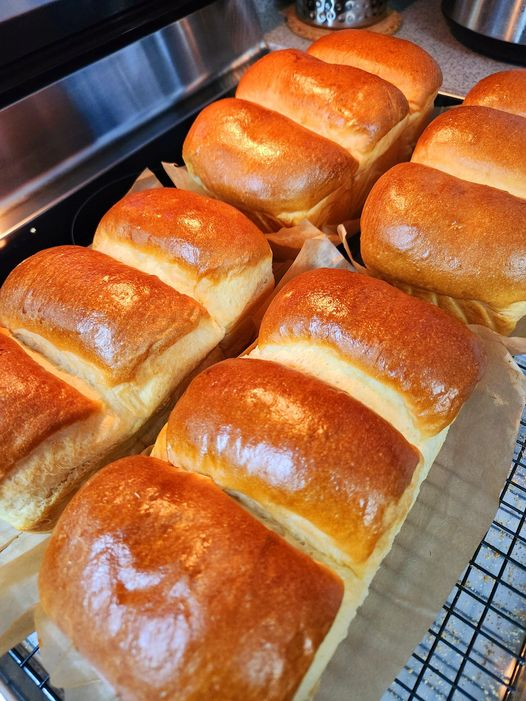Ingredients:
1 cup warm whole milk (110-115°F)
2 tablespoons sugar
2 1/4 teaspoons active dry yeast (1 envelope)
3 1/2 cups all-purpose flour
2 teaspoons salt
2 tablespoons unsalted butter, at room temperature
Instructions:
In a large mixing bowl, combine the warm milk, sugar, and yeast. Stir gently until the yeast is dissolved and let the mixture sit for 5-10 minutes until it becomes frothy.
Add 2 cups of the flour and the salt to the yeast mixture, and stir until well combined.
Stir in the butter until it is well incorporated. Gradually add the remaining 1 1/2 cups flour, 1/2 cup at a time, until a soft dough forms.
Turn the dough out onto a lightly floured surface and knead for 6-8 minutes until it is smooth and elastic.
Place the dough in a greased bowl, cover with plastic wrap or a damp towel, and let it rise in a warm, draft-free place for 1-2 hours, or until it has doubled in size.
Preheat the oven to 350°F. Grease a 9×5 inch loaf pan.
Punch down the dough to release any air pockets and knead it briefly on a lightly floured surface.
Shape the dough into a loaf and place it in the prepared pan. Cover the pan with plastic wrap or a damp towel and let the dough rise again for 30-40 minutes.
Bake the bread for 30-35 minutes, or until it is golden brown and sounds hollow when tapped.
Remove the bread from the oven and let it cool for 10 minutes in the pan before transferring it to a wire rack to cool completely. Serve the bread warm or at room temperature.
Read Next:
FAQs
1. Can I use a different type of milk instead of whole milk in this recipe?
Yes, you can substitute whole milk with other types of milk such as 2% milk, skim milk, or even non-dairy alternatives like almond milk, soy milk, or oat milk. However, keep in mind that using a lower fat content milk or non-dairy milk may slightly alter the texture and flavor of the bread. Whole milk contributes to the bread’s richness and tender crumb, so substitutes may yield a slightly different result.
2. What can I do if my yeast doesn’t become frothy?
If the yeast doesn’t become frothy after 5-10 minutes, there are a few possible reasons: the yeast may be expired, the milk temperature may have been too hot or too cold, or the sugar was omitted, which helps to activate the yeast. Ensure your yeast is not past its expiration date, use a thermometer to check the milk temperature is within the 110-115°F range, and make sure to include the sugar as directed. If the yeast still doesn’t froth, you may need to start over with new yeast.
3. How can I tell when the bread is fully baked?
There are a few ways to tell if the milk bread is fully baked: the top of the bread should be golden brown, and when you tap the loaf, it should sound hollow. Additionally, an instant-read thermometer inserted into the center of the loaf should read around 190-200°F (88-93°C). If the bread is browning too quickly but not yet done in the middle, you can loosely cover the top with aluminum foil and continue baking until it reaches the correct temperature.
